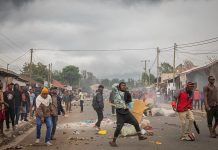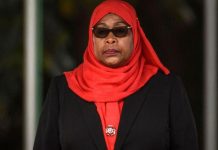AfricaPress-Tanzania: THE World Bank has officially classified Tanzania as a lower middle income economy under its latest country income classifications released on Wednesday.
Finance and Planning Minister, Dr Philip Mpango revealed this Wednesday in Dodoma, saying the tremendous achievement has arrived five years ahead of the Tanzania Development Vision-2025.
President John Magufuli, who is credited for spearheading key economic reforms and leading the country towards achieving its middle income status, expressed his delight upon receiving the news through his twitter account.
“Today, the World Bank has declared Tanzania Middle Income Country. In this regard, I congratulate all my compatriots for this historic achievement. We had envisaged achieving this status by 2025 but, with strong determination, this has been possible in 2020. GOD BLESS TANZANIA.”
Dr Mpango attributed the country’s early attainment of middle income status to steady economic growth and development efforts by the fifth-phase government under President Magufuli.
“I commend President John Magufuli for his tireless efforts that have made it possible for the country to attain the lower middle income status five years ahead of the National Development Vision 2025,” he told reporters in the capital city.
He also reserved special praise to farmers, fishermen, livestock keepers, business operators, miners, banks and the public for their role in the economic record.
The World Bank classifies the world’s economies into four income groups, high, upper-middle, lower-middle, and low and upgraded economies on Gross National Income (GNI) per capita.
The classification is updated each year on July 1.
Tanzania with a 1,105 U.S dollars per capita income for 2019 sailed into the middle income category five years ahead of time thanks to massive socio-economic strides in recent years.
Tanzania has sustained relatively high economic growth over the last decade, averaging 6–7% a year, with the poverty rate in the country also on the decline.
Joining Tanzania in the 50-country lower middle income log are Algeria, Nepal and Sri Lanka as new comers.
For the current 2021 fiscal year, low-income economies are defined as those with a GNI per capita, calculated using the World Bank Atlas method, of 1,035 US dollars or less in 2019 while lower middle-income economies are those with a GNI per capita between 1,036 US dollars and 4,045 US dollars.
Upper middle-income economies are those with a GNI per capita between 4,046 US dollars and 12,535 US dollars and high-income economies are those with a GNI per capita of 12,536 US dollars or more.
The GNI measures all income of a country’s residents and businesses, regardless of where it’s produced whereas the GDP measures the income of anyone within a country’s boundaries irrespective of who produces it.
Estimates of GNI are obtained from economists in World Bank country units; and the size of the population is estimated by World Bank demographers from a variety of sources, including the UN’s biennial World Population Prospects.
The Tanzanian economy has been growing at an average of 6.9 per cent during President Magufuli’s administration.
According to the Finance and Planning Minister, Dr Philip Mpango, the growth has benefited from implementation of major economic infrastructures including construction, transport, electricity and social services; health, education and water.
An impressive GDP growth has resulted in increased Government revenue to finance development projects, improvement of social services and increase in economic opportunities.
For the entire period of the fifth-phase administration, inflation remained stable at a single digit level averaging 4.4 per cent, easing to 3.4 per cent in 2019– the lowest inflation rate ever recorded over a half century whereby 2.4 per cent inflation was recorded in 1970.
“The stability achieved in inflation is attributed to prudent management of fiscal and monetary policies, stable oil prices and availability of food in domestic markets and in neighbouring countries,” said Dr Mpango.
“It is on account of this stability that escalation of the cost of living has eased and good investment has been created,” he added, recently when moving the national budget for the 2020/21 financial year.
Over the past few years, income and non-income poverty has continued to decline, whereby basic needs poverty has declined from 28.2 per cent in 2011/12 to 26.4 per cent in 2017/18.
The poverty incidence declined in both urban and rural areas with a decline of 15.8 per cent and 31.3 per cent, respectively from 21.7 per cent and 33.3 per cent.
In addition, the level of poverty depth declined from 6.7 per cent in 2011/12 to 6.2 per cent in 2017/18 and poverty severity declined from 2.3 per cent to 2.1 per cent during the same period.
On the other hand, household monthly expenditure increased from an average of 258,751/- to 416,927/-.
Under the fifth phase government, domestic revenue increased to 18.5 trillion shillings in 2018/19 from 11.0 trillion shillings in 2014/15 equivalent to an increase of 69.1 per cent., while tax revenue collection increased from a monthly average of 825bn/- in 2014/15 to an average of 1.3tri/- in 2018/19 and further up to monthly average of 1.5tri/- for the period of July, 2019 to April, 2020.
Tax revenue increased from 9.9 tri/- in 2014/15 to 15.5 tri/- 2018/19 equivalent to 56.5 per cent. Non-Tax revenue increased from 688.7bn/- in 2014/15 to 2.4 tri/- in 2018/19 and up to 2.25tri/- for the first 10 months in 2019/20.
Key to those financial feats is efforts by President Magufuli’s government in controlling revenue leakages by strengthening enforcement of the tax laws and use of Information and Communication Technologies (ICT) systems in revenue collection.







